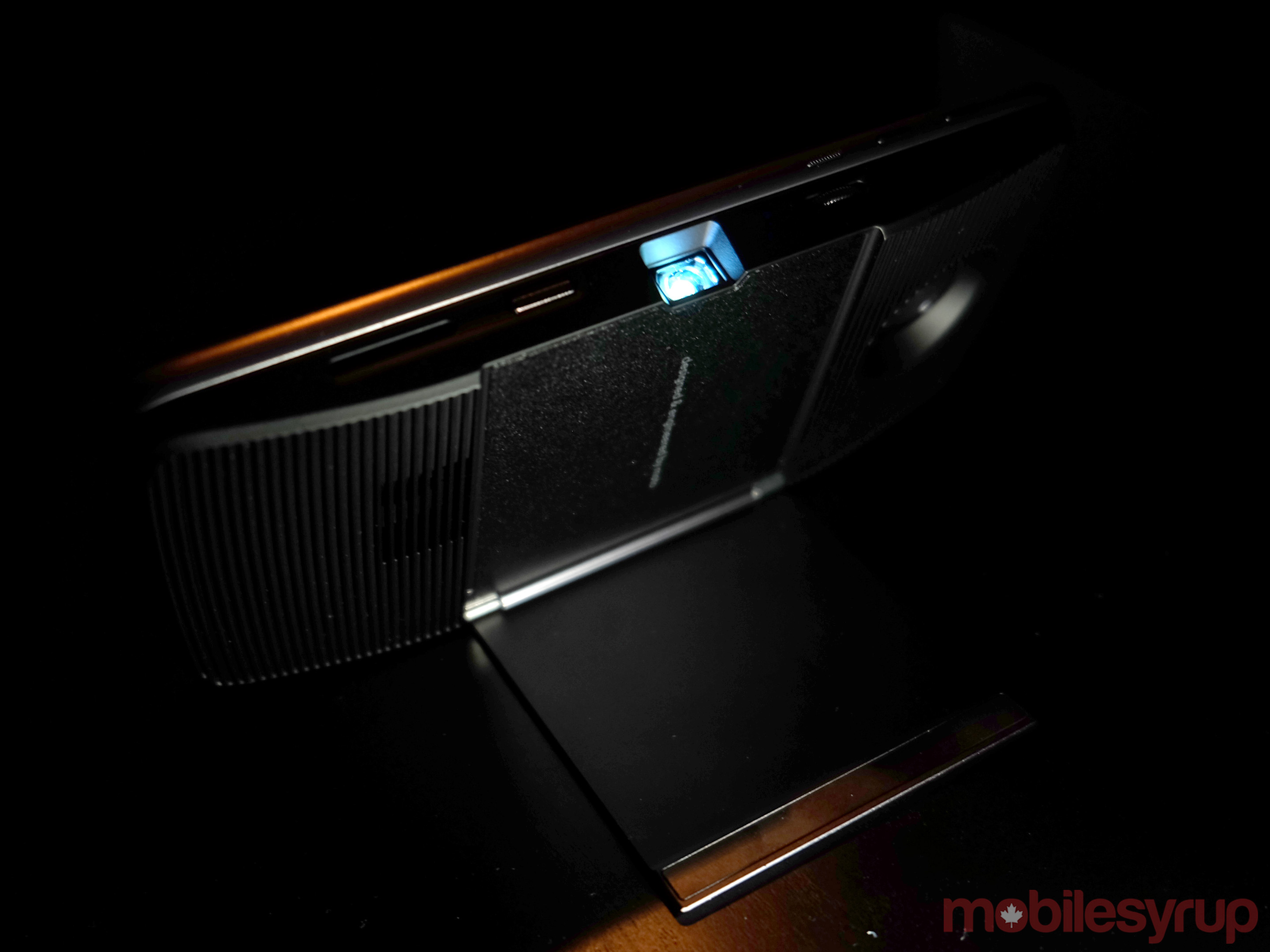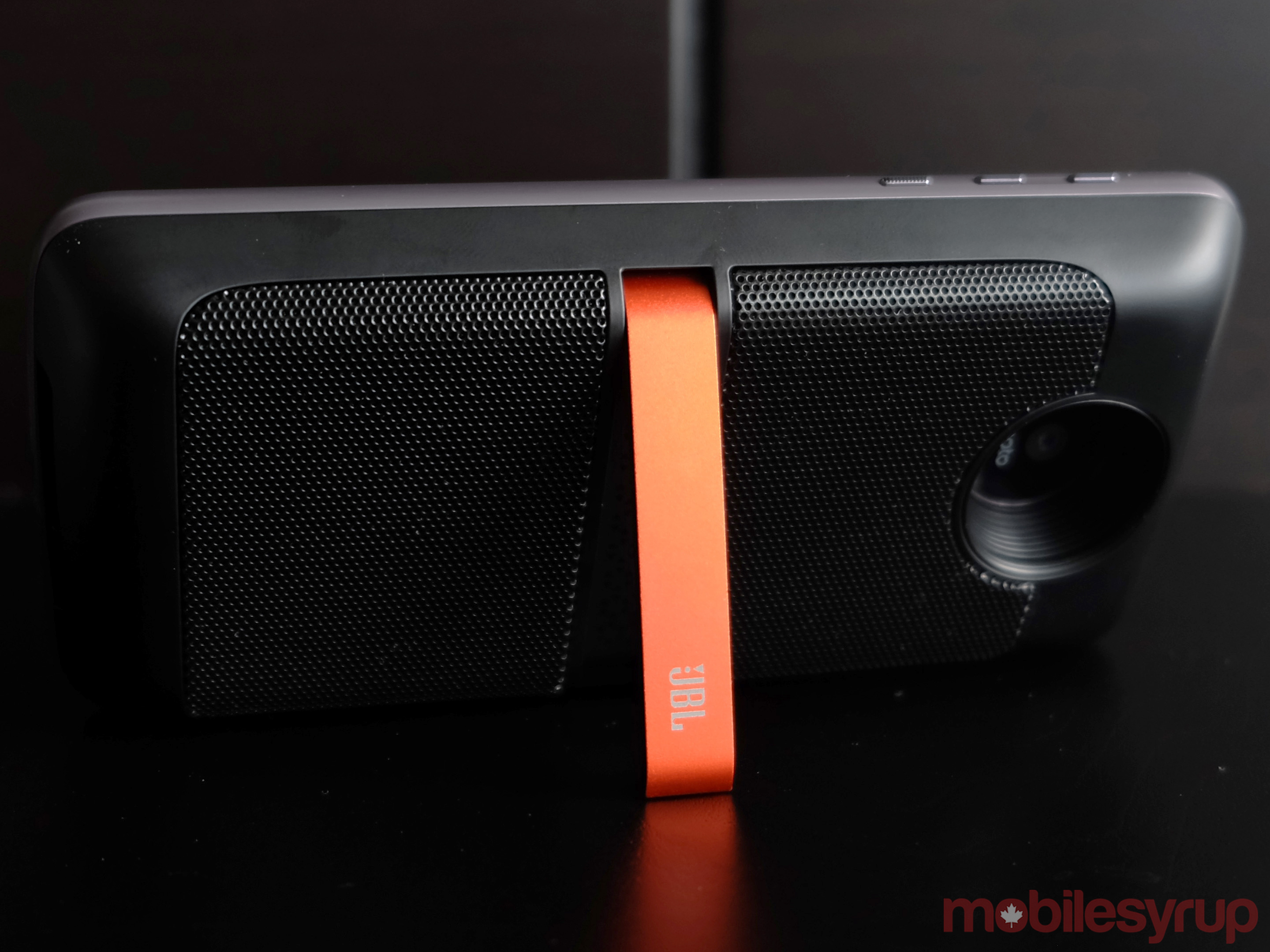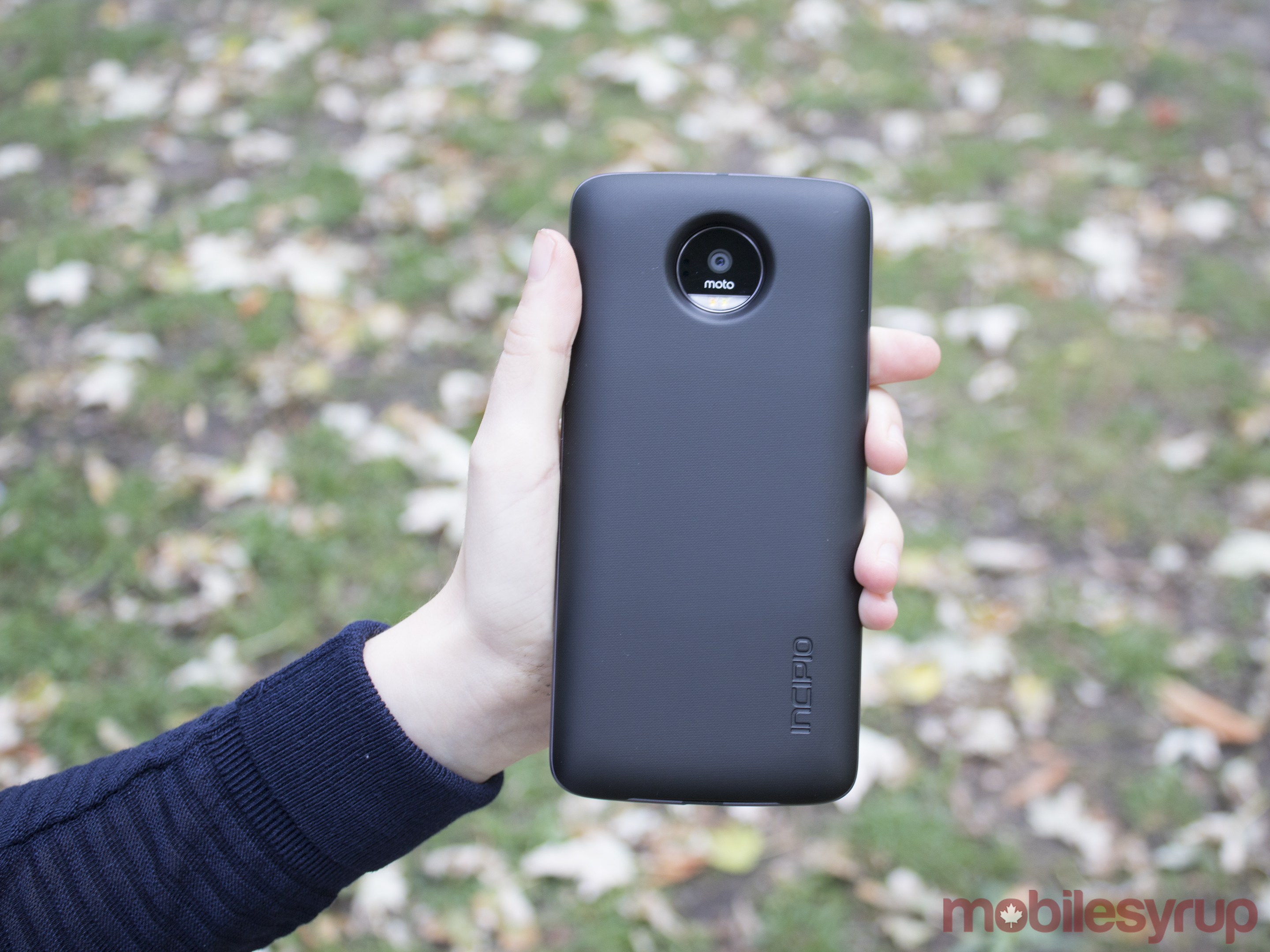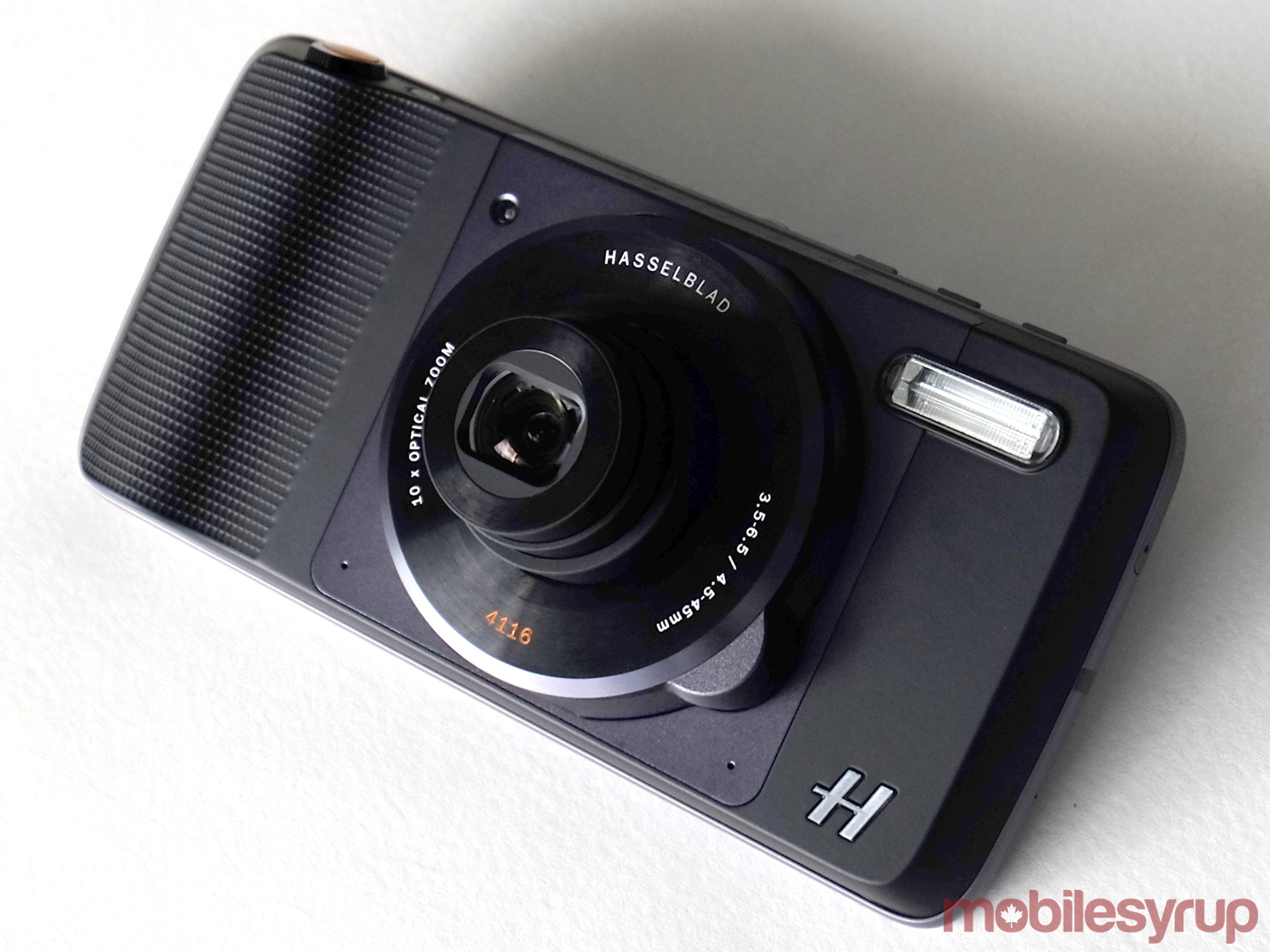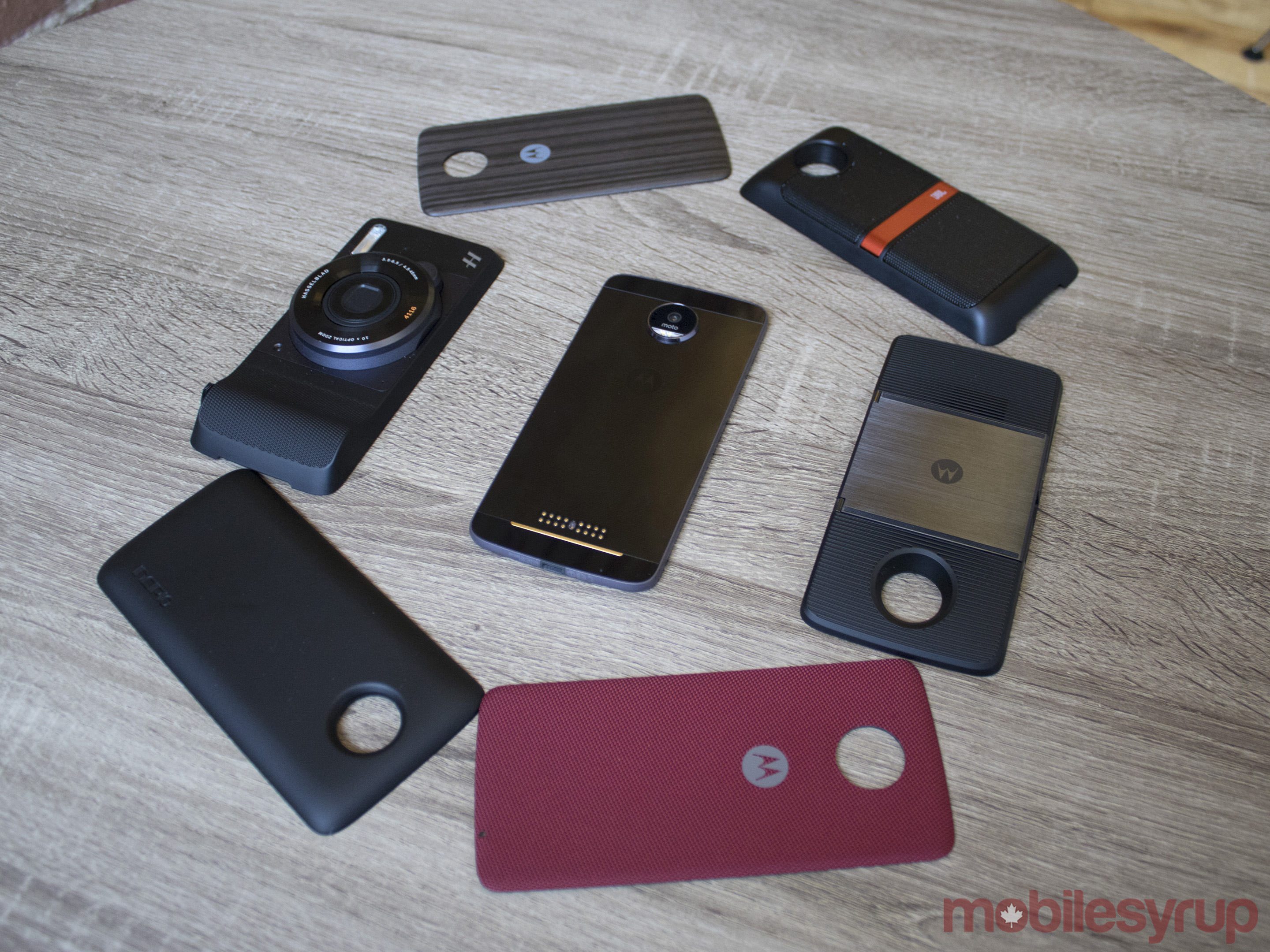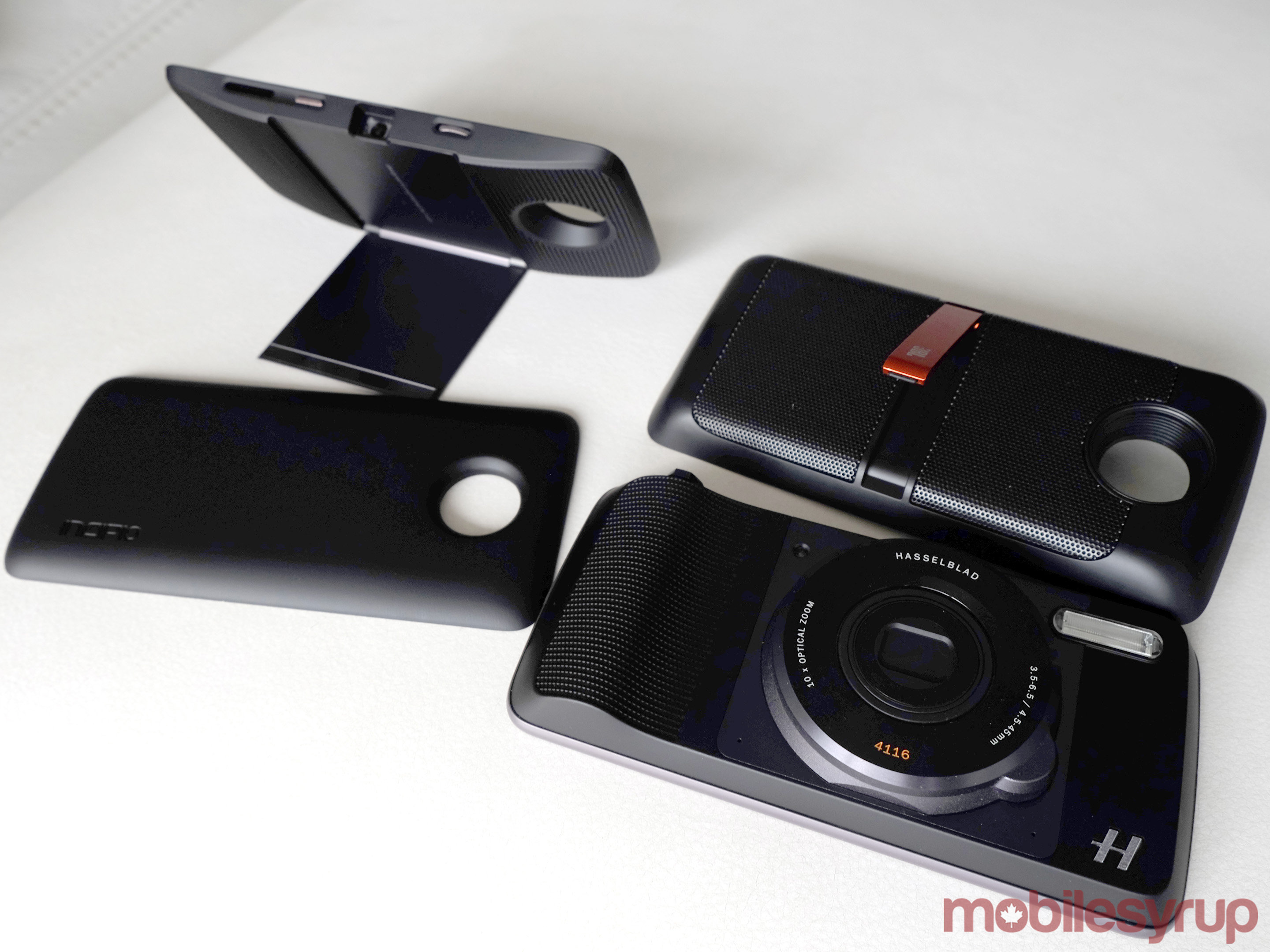
If this is the year where modular smartphones started to become a thing, then Motorola should get most of the credit for kicking it off. The Moto Mods system is an intriguing example of how to expand a phone’s hardware limitations in a way that feels natural.
Conceptually, it’s hard not to like a modular smartphone. Apps irrevocably changed the usability of a handset only eight years ago, yet hardware has been less impactful, or non-existent, depending on the device in question. The iPhone has a massive accessory aftermarket that includes attachments or add-ons to the device, particularly with lenses and battery cases, among others.
What Motorola is doing with its Moto Mods is inherently different because they feel like they are part of the phone via the magnetic connectors on the back. LG’s take on modularity with the G5 and Friends products holds the same premise, except it’s more invasive and there has been little movement or expansion
The first four Moto Mods are tactical entries aiming to cover some of the main use cases consumers would ostensibly be looking for, and they all work with both the Moto Z and Moto Z Play.
Moto Insta-Share Projector
Pico projectors are neat, and the small form factor of this one makes it easy to carry around in a pinch. The setup was nothing more than attaching it to the back of the Moto Z or Moto Z Play, pressing the projector’s power button to turn it on and tapping through the welcome menu. Any content played through the phone would funnel out from the light in the middle.
A focusing wheel can sharpen the image, and screen size is based on distance from the surface it’s projecting to. That maxes out at 70 inches, but I found something closer to 40 t0 50-inches to be the most ideal size in reducing colour washout. Notifications can be turned off from appearing through the projector to avoid distractions, and the device automatically adjusts based on the angle it’s placed in.
For me, the best use case was lying in bed watching an episode of a show projected onto the ceiling. Not only was it really comfortable, but the white paint made for an ideal canvas, especially at night. Outputting 50 lumens helped maintain solid brightness, but the fan inside was audible over the limited max audio output of the Moto Z. I opted to pair the phone with a Bluetooth speaker to drown it out and make the content come alive.
It was an undoubtedly slick implementation, and just showing the Moto Insta-Share Projector to people piqued interest. But when the full picture (pardon the pun) was laid out, the limitations gave them pause. The Insta-Share projects in 480p (854 x 480 pixel), not in HD. Battery life is also not strong enough to keep it going for a full two-hour movie. I could get through a one-hour episode of a show on Netflix and that was it. Plugging in the charger helped extend that, but also affected placement because it needed to be close to an outlet.
The price is another factor. At $399, it’s a hefty cost to add to either phone. The Moto Z is $900 outright, while the Moto Z Play is $650. Of all the Moto Mods, this one is the most niche because it isn’t something people would want to use often. The price all but ensures it will stay that way.
Availability for the Moto Insta-Share Projector has been confirmed with Bell, Rogers, Telus and other retailers such as WirelessWave, TBooth and Costco. Rogers is currently offering a promotion that throws in the projector for free with a Moto Z pre-order, which is “available for a limited time or while quantities last.”
JBL SoundBoost Speaker
Despite how ubiquitous and small some Bluetooth speakers are nowadays, having one attached to a phone will trump them on convenience. Developed by JBL, the SoundBoost Speaker is much like it sounds, which is to say that it boosts the audio for either phone when attached. Like the other Moto Mods, the transition is pretty seamless. Even while playing audio on the phone, attaching the SoundBoost simply pushes it through there instead.
It does look nice, much like any speaker its size probably would, adding some weight and girth to the phone in the process. The USB-C charging port is on the inner side, so it can’t be charged independently during playback. The built-in 1,000mAh battery is rated at 10 hours, but I found it could only go that long if the volume was closer to 60 per cent. At full blast (or close to it), it went down closer to seven hours. Given its size, that’s not bad at all.
How does it sound? Better than I expected, to be honest, though I also made sure to measure my expectations. The JBL SoundBoost Speaker struggles at the two ends of the audio spectrum, meaning bass and treble aren’t as punchy, giving vocals, which are in the centre, more prominence. Like all small speakers, it also had a tipping point for distortion that was thankfully closer to full blast then the middle, allowing the unit to be louder without sounding like reverb and static were settling in.
The reddish-orange kickstand wasn’t necessary to use the JBL SoundBoost, but it was a nice perk in propping up the device well for watching a video. By angling the kickstand to face the speaker drivers downward, the sound bounces off the surface and creates a wider stereo effect.
At $99, it’s one of the less expensive Moto Mods, albeit in the same price range as larger and more capable Bluetooth speakers. The intangible in the price is convenience. Rather than carry something else, the JBL SoundBoost is already attached and ready to play.
Bell, Rogers, Telus, Koodo and other retailers such as WirelessWave, TBooth and Costco have all confirmed to be selling the JBL SoundBoost Speaker.
Incipio OffGrid Power Pack
This is the “everyman” Moto Mod because it addresses one of the top gripes consumers have with their phones: battery life. Sporting a 2,220mAh battery inside, the Power Pack doesn’t have enough juice to fill up a Moto Z or Moto Z Play from empty to full, but it’s large enough to keep either phone going for several hours longer.
It’s also supposed to be smarter in how it tops up the phone, kicking in at under 80 per cent to keep the device’s lights on for a longer period. Unlike other battery packs for other devices, there is no switch to turn it on or off, taking away any manual imperative to top up the phone on demand.
As it doesn’t have its own charging port, the Power Pack can only be filled when attached to the phone while it’s charging. The phone’s battery will always charge first before funneling power over to the battery pack. When detached, a small touch button above the magnetic connectors on the Power Pack turns on the battery life LED indicator. Green means full, yellow is halfway and red is low.
The review unit I had didn’t have the Qi wireless charging support another Incipio variant has in the United States, which is a shame because it would make charging easier whenever a pad is handy. That being said, if you can get your hands on one south of the border, it will work perfectly fine with either phone in Canada.
It’s a standard battery pack, by any measure, and useful for extending the phone’s battery life, which is why it’s probably the most appealing of the initial group of Mods.
It’s also priced at about the same as many other battery cases, selling for $89 through Rogers, Bell, Telus and other retailers such as WirelessWave, TBooth, Wireless etc, and Costco.
Hasselblad True Zoom
Putting “true zoom” in the name of this Mod is an ode to what it truly offers. With a 10x optical zoom lens, the Hasselblad True Zoom is an attachment that should dramatically change what types of photos can be taken, and how good their composition will be. Well, results are mixed, and restrained internal design is part of the reason why.
This is a tastefully designed Moto Mod that harkens back to point-and-shoot digicams, with a tinge of old film-based portable ones from the 90s. The grip on the side is nicely contoured, with a solid shutter button and zoom wheel. A sizeable flash stands out, and the overall lens construction looks and feels well done.
Internally, the unit has a 12-megapixel 1/2.3 CMOS image sensor with 1.55 Micron pixels and optical image stabilization (OIS) in the lens. The aperture is not especially wide at f/3.5 (it’s f/6.5 when fully zoomed in) to start with, making night and low-light photos problematic to capture while holding it. Video capture maxes out at 1080p, which may be little consolation to those expecting 4K.
There’s no mounting screw at the bottom to attach it to a tripod, and the body is too thick for most selfie sticks (that would have a mounting screw), so the only workaround is to prop it up on a flat surface and shoot with a timer to avoid hand jitter. OIS helps in shooting at full zoom when lighting is adequate, but a steady hand is vital to ensure photos look good.
The confluence of the outer and internal features casts more of a spotlight on the optical zoom. The Hasselblad True Zoom is not so much a major upgrade in photo composition, but rather a physical telephoto extension of the phone’s camera. That also means it is beholden to the software, so beyond focusing being touch-based, the its performance is inextricably tied to whatever camera app it’s working from. Both Moto Z phones have the same camera app, including a manual mode that allows for shooting in RAW format.
Shooting action or moving objects is challenging while zooming in. Thankfully, the Moto Mod cooperates with the auto-focus lock (by holding down until a lock icon appears) to improve the odds of keeping the subject sharp. On the flip side, the extra zoom does little for shooting in macro. Even at its widest angle, the Hasselblad True Zoom can’t get close enough to isolate a subject for a really detailed close-up. I tried doing it by moving further away and zooming in, but it couldn’t really deliver what I wanted.
Overall photo quality bears out the shortcomings in other ways, too. Colours and tones are duller than the Moto Z can shoot on its own. I liked that I could control exposure through the camera app for the Hasselblad True Zoom, but I had no real options on how to bump up colour saturation. Granted, I could adjust it later using a photo-editing tool, but for quick snaps and shares via social media, filters would probably be the only way to liven them up.
Whether a software update can fix some of the Hasselblad True Zoom’s drawbacks is hard to say. The image sensor is not something that couldn’t be found in another smartphone camera, so hardware limits will apply, either way. The optical zoom is what stands out the most, but it’s not enough to justify the full cost of this Moto Mod.
Telus and other retailers such as WirelessWave, TBooth, Wireless etc, and Costco will carry the Hasselblad True Zoom for $349.
Wrap Up
Motorola’s initial quartet of Moto Mods may not be slam dunks, but they are a decent start. That Motorola has promised not to abandon the form factor and magnetic connector for its system means any one of these could be attached to future devices. If there is to be a modular future for the company, it will have to stay true to its word, while encouraging development of more Moto Mods.
It will also have to find a way to bring the price down. It’s hard enough for most vendors to sell a phone that creeps toward $1,000, and adding hundreds more to that only builds pressure to deliver something extraordinary. The Moto Mods aren’t quite there yet, but the idea they represent is something worth exploring.
MobileSyrup may earn a commission from purchases made via our links, which helps fund the journalism we provide free on our website. These links do not influence our editorial content. Support us here.

